This article goes back to a discussion in Rowperfect some time ago where readers talked about this refering to flatwater rowing. Does this apply also to Coastal Rowing? Are Coastal Boats faster in deep water? Yes – but it depends…
Have you noticed the waterspeed of your boat while rowing over a shallow sandbank? Peter was rowing along a Spanish beach with his solo and reported a decrease of speed while crossing a sandbank from 9.5km/hr to 8km/hrs. His friend who accompanied Peter with a 6.00 m Kajak reduced the speed from 9 km/h auf 7,5 km/h.
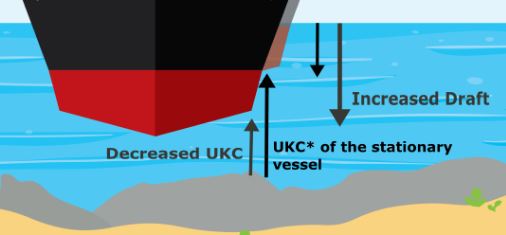
So, are Coastal Boats faster at faster in deep water?
Here’s the first reason:
The proximity of the bottom in shallows increases the shear gradient in the water under the boat, which augments skin friction.’
Hmmm . . . I had to ask a little further to get to the bottom of this one; try this translation:
You may have used ‘shear’ in your Maths class: it’s what you do when you ‘push’ a rectangle sideways to turn it into a parallelogram – the base stays put, the top moves sideways and if you want the vertical height to stay the same (let’s not have the boat sink!), the linking sides stretch.

A rectangle being shoved into a parallelogram
In the same way a boat moving through the water pushes the water as well. The water next to the hull moves at hull speed; the water at the bottom of the lake stays still. The speed of the water in-between decreases the further it is from the boat.
Back to the Maths class: you can plot the speed of the water against its distance from the hull on a graph – the slope of the curve you make is the velocity shear gradient. This is proportional to skin friction.
In shallow water, the distance between the water at hull speed and the water at the bottom with zero speed is smaller – the slope is steeper ie the gradient is greater so the skin friction is greater and you are slowed down more.
In deeper water, there is a larger distance for the speed to reduce to zero – the slope is less steep and so skin friction is also smaller.
Is there another way of looking at it?
My friendly translator offered this: Imagine having two stretchy cords anchoring the boat to the bottom of the lake, one from the stern, the other from the bow – these are the sides of your rectangle. If the boat moves a certain distance the cords are stretched into your parallelogram and pull against the boat.
In deep water, the cords are long and when the boat moves don’t move far from the vertical: the cords don’t have to stretch very much and therefore don’t pull as hard.
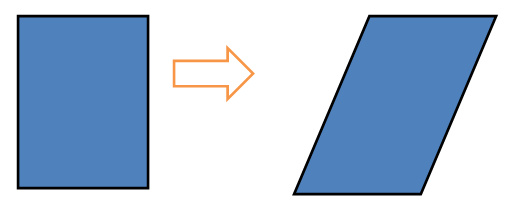
Boat pushing the water in deep water
To move the same distance in shallow water with shorter cords, the angle from vertical changes much more and so the cords stretch more and pull back harder.

Boat pushing the water in shallow water
What about Coastal Rowing?
What did we learn so far: Shallow water rowing is not the same as deep water rowing. Shallow water effects the boat speed, and you need to careful while rowing in shallow waters as well. Here are some things that affect the speed of the boat in shallow waters.
Shallow waters decrease the boat speed because the water flowing under the boat moves quickly in shallow water, thereby creating high velocity. High velocity at a point in liquid creates low pressure; thus, your boat sinks more and displaces more water. So, the boat needs to push more water out of its way, which decreases the speed.
The draft of the boat will increase in shallow waters because, in shallow waters, the boat will be moving so close to the ground, and there is less space for the water to flow under the boat, which increases the water flow under the boat (velocity at that particular point in the water increases). You might notice this during a beach sprint, when you start at shallow water. But also when touring along the coast. Look for sufficient water depth under your boat.
The decrease in the speed of a boat moving at 9.5km/hrs – 5 knots in shallow water
The below table shows how the hull or displacement speed of a boat moving at 5 knots will get affected by a decrease in the water depth. All those values are typical (or average values), and those values may vary a little bit for each boat (A HydroComp Technical Report ).
| Boat speed (in knots) |
Water depth (M/ in feet) |
% decrease in the speed |
| 5 kts (9.5km/h) | 4.20m/ 14 feet + | No loss |
| 5 kts | 1.80m/ 6 feet | 1 % loss |
| 5 kts | 0.60m/ 2 feet | 4 % loss |
From Bernoulli’s principle, if the velocity is high at any point in the liquid, then there is a corresponding drop in the pressure at the point. Generally, the pressure is required to lift the boat in the water, and if that pressure decreases, the boat will sink more in water, thereby increasing the draft.
If the draft increases, then the boat displaces more water space in the water, and the boat needs to push more water out of its way. Pushing more water out of its (boats) way means, the boat takes more power and time to push that extra water out of its (boats) way. So, it will decrease the boat speed in shallow waters and takes more time to cover a small distance in shallow waters.
The main reason behind the decrease in the speed is due to the boat sinks more (or draft of a boat increases) in shallow waters than in normal (more depth) waters. Otherwise, the speed of the boat will not decrease if the draft of the boat doesn’t increase in shallow waters.
That increase in the draft is known as the “squat” effect, and it will cause the boat to sink more toward its stern side (generally). Meaning the stern side of the boat will be sunk more in water than in the bow side of the boat if the ground under the boat in straight or even. Again you need to level the boat for a safe ride (source1) (source2).

How significant is this to Coastal Rowers?
Well, we need to see where we are. Are we touring, are we at a regatta? Impact of flatwater regatta courses have been investigated and shown, that a difference of 1 m do not show an impact on an multi 8 lane race. Wind is much more crucial.
But yes – coastal boats are faster in deep water. Coastal Regatta courses in terms of Endurance Races might have a small effect at beach starts. Once the beaches shape is very even to all starting boats, there might be an effect in case the shape is different. Steeper parts might favor the team – at least for a few strokes. Coaches could check the beach shapes before starting and decide where to place the boat. After turning point A, there is no difference for the competitive rowers at all. Same applies for the Beach Sprint start and the first 3-4 strokes.
Tour rowers can be effected by speed reduction when rowing to close to the shore or crossing shallow sandbanks. But does it matter? How much time will they loose on a 25K trip.

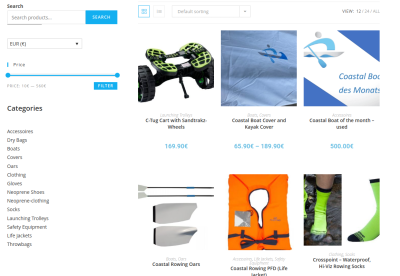
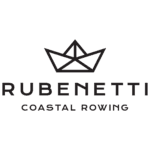

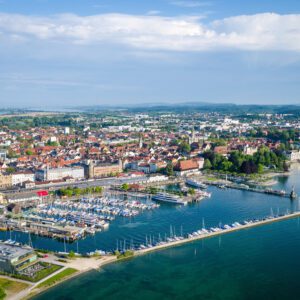
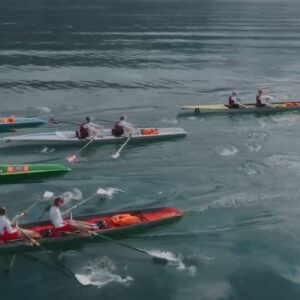
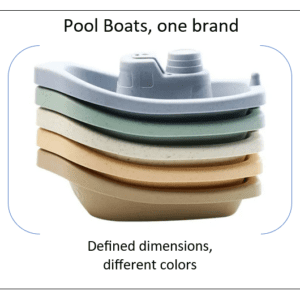
This Post Has 2 Comments
This is a response from Carl Douglas, March 21st. 2022, Facebook:
When a vessel passes through shallows it responds similarly to an F1 racing car that takes advantage of “ground effect”. Any body moving through a fluid (such as air, or water), obliges that fluid also to move past it, so the fluid flowing under, as well as around a boat or a car, has to accelerate and move in the opposite direction to what is passing through it. When a fluid accelerates, it exchanges some of its pressure energy for kinetic energy, so it’s pressure falls. It is this drop in pressure within the narrow space between the car’s underside and the road which makes the F1 car grip the road more tightly,. And it is the increased sternwards velocity of the water under the boat that causes boats in shallow water to “squat” and to suffer increased drag, including from the incomplete recovery of the increased kinetic energy of the water that has passed under the boat.
Cam Atkins on FB
hard to know – i feel variables such as the rowers themselves, their rigging over 25kms etc. 2 boats course tide and wind , psychology tactics.